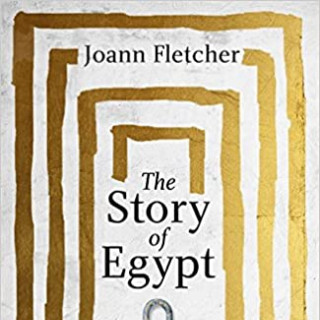
Egyptian Mythology Display - Spring Clean 2024
Review of The Story of Egypt by Joann Fletcher: Chapters 1 to 4
In a similar way to how I researched the Celts for my Celt project (https://www.beastsofwar.com/project/1490359/) I felt the urge to read up on ancient Egypt. I remember studying the basics back in school, but school history is often a very simplistic view and rarely focuses on the aspects that are most relevant to a wargamer. I visited a book shop and out of the four or five books available I chose to buy “The Story of Egypt” by Joann Fletcher.
As with my review of the various Celtic history books I’ll summarise the book by sharing one or two of the more interesting facts per chapter.
Chapter 1: In the beginning
The Egyptian creation myth varied a lot from region to region. A key theme is the duality of opposites and their balance, which recurs throughout Egyptian mythology and society. E.g. life and death, dark and light.
Chapter 2: Sahara Savannah c. 55,000-5500 BC
Before Egypt became a nation the Sahara region saw enough annual rainfall that it was savannah, not desert. The area was populated by people who were predominantly nomadic with grazing cattle, but also had some fixed communities. As the climate changed the rains moved south and the Sahara turned to desert. The people were forced to migrate East to the Nile valley and its water supply.
We know from the human remains found from this period that they lived in relative peace. They were keen on jewellery made from shells and stones, and of applying cosmetics.
Chapter 3: Seeking the Waters c. 5500-3500 BC
The Nile valley region evolves into many city states. Each had their own religion and culture. Over time these amalgamate (through diplomacy, politics, or warfare) into Upper Egypt in the South, and Lower Egypt in the North.
Violence was more common, with many graves and tombs excavated showing signs of a violent death. Also notable is the fact that maces were regarded as ceremonial/ritual weapons.
Chapter 4: The North-South Divide c. 3500-3100 BC
In this period the leaders of each city state was known as an animal or similar symbol: e.g. the Lion, the Elephant, the Dog and the Seashell. Over time these were conquered by the Scorpion (no I’m not making this up). At first Egyptologists thought these characters were mythical, but in 1983 the remains of Lower Egypt’s old capital city, Buto, was found. Within it was a chamber of goods from all over Egypt, each marked with the sign of the Scorpion, indicating they were tribute being sent to the Scorpion from subjugated city states.











































































Leave a Reply